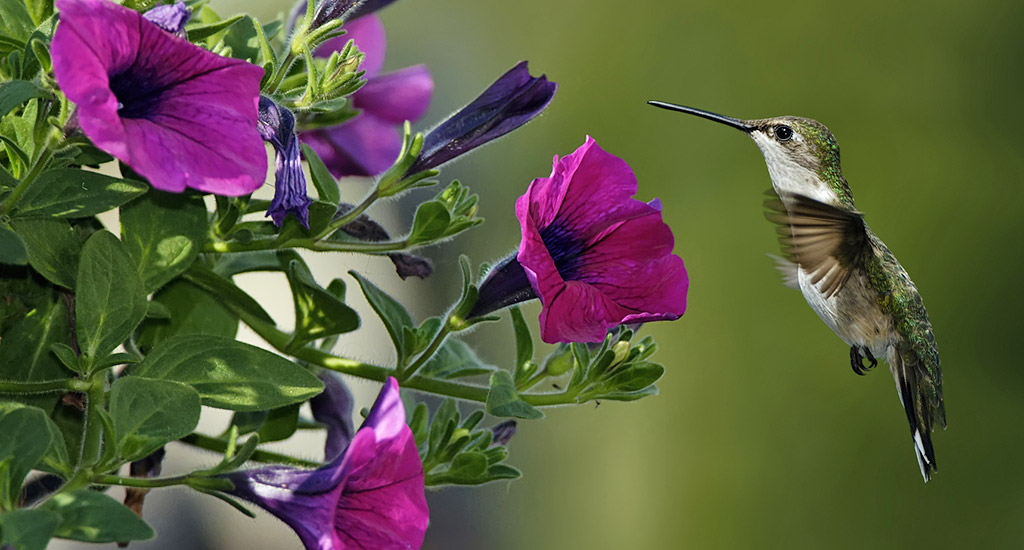Hummingbird Garden

With their glittering gorgets, feisty attitudes, and energetic habits, hummingbirds have become favored garden guests. These diminutive pollinators will soon be returning to our area after wintering in Mexico and Central America. Welcome them back to New Jersey with a reliable water source and plantings in your new hummingbird garden. Rohsler’s has everything you need to begin a garden that hummingbirds will love!
All the colors of the rainbow
Hummingbirds are attracted to bright colors, like red, yellow, orange, and purple. A hummingbird garden featuring tube-shaped flowers in these colors will guarantee these sprightly little creatures appearing in your garden.
Have you ever noticed how most hummingbird feeders are red? Red is a proven hummingbird “magnet.” Many nectar feeders prominently feature this hue to grab their attention. Because hummingbirds are drawn to red, anything as simple as red clothing and even red hair can attract them!
Here birdy birdy
In our region, expect to see the Ruby-throated Hummingbird. Both the male and female have white bellies and emerald-colored heads, backs, tails, and wings. You will have to wait until the bird sits down to get a good look at its wings since they beat at approximately 80 times per second during flight! This rapid-fire wing movement produces the famous hummingbird’s “hum,” and allows them to fly in any direction. Even backward!
The male’s fiery gorget, or throat patch, is ruby-colored; hence the name! At times, the gorget can appear completely dark, but the jewel-like color ignites in ideal light conditions.
Start your hummingbird garden today
Hummingbirds will hover over plants such as, Agastache, Cardinal Flower, Columbine, Lupines, Morning Glory, Salvia, Trumpet Creeper, Wild Bergamot, and several types of lilies. Rohsler’s experts can recommend the plant species best suited to the conditions in your garden. They may suggest even more flowers and shrubs to make sure you have the best hummingbird garden in your neighborhood.
feeding the hummingbirds
Territorial and pugnacious, hummingbirds will defend their food, your flowers or feeder with a great deal of energy. They are known for chasing off much larger birds to protect their nectar sources.
If you choose to purchase a hummingbird feeder, keep it filled with homemade “nectar.” The recipe is simple: Dissolve one part table sugar in four parts boiling water. If all of the nectar does not fit in the feeder, the unused portion can be stored in the refrigerator.
For the well-being of the birds:
- Use only sugar and water
- Hang the feeders in the shade
- Keep the feeders away from house cats
- Consider using an ant guard
- Change the nectar regularly
- Keep the feeder clean
Feeders should be cleaned with hot water every three days, and even more frequently in hot weather. Do NOT use harsh detergents. Take care to prevent the nectar from becoming rancid, cloudy, or moldy. If mold does form, scrub it out with a brush. Get into those hard-to-reach spots by adding clean sand to the wash water.
Keep a close watch for visiting hummingbird species from other regions. Rufous, Allen’s, and Calliope hummingbirds are just a few of the accidentals that have been seen in our area.
